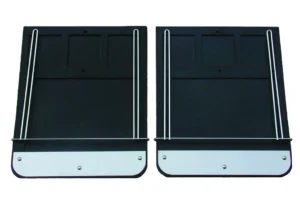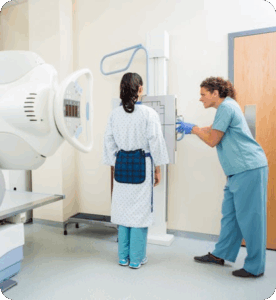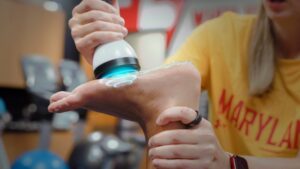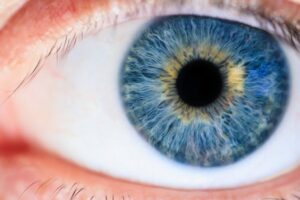DuBois, PA / Syndication Cloud / August 27, 2025 / Highroad Enterprises

Key Takeaways:
- Peripheral neuropathy can be a symptom of chronic Lyme disease, causing burning, tingling, and numbness in extremities
- Traditional treatments often fail because they don’t address the complex nature of neurological Lyme disease
- It is one of the most common problems associated with Exploding Diabetes epidemic.
- StemWave Acoustic Wave Therapy has shown an 80-90% improvement rate for neuropathy patients when combined with complementary approaches
- Recurring symptom patterns that come and go and return in the same way provide key diagnostic clues for Lyme-related neuropathy
- A multimodal treatment approach including inflammation reduction and neural repair offers a promising path forward for those suffering from chronic neuropathic pain
Understanding Peripheral Neuropathy’s Connection to Chronic Lyme Disease
Peripheral neuropathy pain can be excruciating and life-altering. What many patients don’t realize is that their mysterious nerve pain may actually be connected to an underlying Lyme disease infection. When Lyme bacteria invade the nervous system, they can trigger widespread neurological symptoms including the burning, tingling, and numbness characteristic of neuropathy.
Lyme disease is particularly problematic because it can hide in neural tissue, making it difficult to detect and treat with conventional approaches. Mercy Family Health and Regenerative Pain Management has developed treatment protocols that address the root causes of neuropathic pain, not just the symptoms. Their comprehensive approach recognizes that Lyme-related neuropathy requires specialized care beyond standard pain medications. However many of the same strategies work well with the more common Diabetes related neuropathy.
The connection between Lyme and neuropathy explains why many patients experience ongoing symptoms despite trying multiple conventional treatments. Traditional approaches often miss this link entirely, leaving patients suffering unnecessarily for years or even decades.
Why Neuropathy Pain Persists and Worsens In Both Lyme Disease and Diabetes
1. Neurological protection mechanisms
Your body’s natural protective barriers—specifically the blood-brain barrier and blood-nerve barrier—create a sanctuary for Lyme bacteria. These protection mechanisms, designed to keep harmful substances away from delicate nerve tissue, inadvertently shield the infection from your immune system and antibiotics. This explains why standard treatments often fail to provide lasting relief.
In Diabetes, the chronic elevated blood sugars poison the nerves causing increasingly severe damage. Once the damage is done the nerves rarely heal– until StemWave Shockwave became available.
The protected environment of the nervous system allows Lyme bacteria to persist even after treatment appears successful. Medical experts have observed that virtually any part of the neurological system can be infected with Lyme organisms, making complete eradication extremely challenging.
In Diabetes of course it is a chemical damage, not an infection damage and the elevated blood sugar is everywhere so the damage is pretty much everywhere but becomes much worse where the microcirculation is also impaired which is most common in the feet in diabetes.
2. Chronic inflammation cycles
Neuropathy pain intensifies through self-perpetuating inflammation cycles. When Lyme bacteria invade nerve tissue, they trigger an immune response that causes inflammation. This inflammation damages nerve fibers, creating more pain signals and triggering additional inflammation—a vicious cycle that continues even after the initial infection is addressed.
When the blood sugars are elevated the proteins of the nerves are damaged causing many different malfunctions.
This explains why patients might experience temporary improvement with anti-inflammatory medications but soon relapse when the underlying drivers of inflammation remain unaddressed. Breaking this cycle requires a comprehensive approach that targets both the infection and the inflammatory response.
3. Recurring symptom patterns
One of the most telling signs of Lyme-related neuropathy is its recurring pattern. Patients often experience symptom flare-ups that mirror their original presentation exactly. This pattern differs from many other chronic pain conditions, which tend to evolve or shift over time. If your neuropathy symptoms resolve and then return with identical characteristics, Lyme disease should be high on the list of potential causes.
This recurrence pattern is a critical diagnostic clue that many healthcare providers miss. Patients may go through cycles of improvement and relapse for years without ever addressing the underlying infection driving these cycles.
The Challenge of Accurate Diagnosis
1. Symptom overlap with other neurological conditions
Lyme disease is often called “the great imitator” because it can mimic dozens of other conditions. Neurological Lyme may be misdiagnosed as multiple sclerosis, fibromyalgia, chronic fatigue syndrome, or idiopathic neuropathy. Even radiological findings can be ambiguous, with MRI results sometimes listed as “consistent with MS or chronic Lyme disease.”
This diagnostic confusion leads to treatment approaches that address the wrong condition, wasting precious time while the underlying infection continues to damage the nervous system. Many patients see multiple specialists before someone finally connects their symptoms to Lyme disease.
Sometimes the peripheral neuropathy of Diabetes and Lyme disease are indistinguishable and sometimes they overlap in the same person. Fortunately the StemWave Shockwave system can induce healing in either or both conditioins.
2. Key diagnostic indicators to recognize
Beyond recurring symptom patterns, several other indicators suggest Lyme as the root cause of neuropathy:
- Symptoms that affect multiple body systems simultaneously
- Neurological symptoms that wax and wane with no clear trigger
- Memory loss or cognitive difficulties accompanying the neuropathy
- Symptom improvement with antibiotic treatment, even if temporary
- History of tick exposure or living in Lyme-endemic areas
- Unusual sensory symptoms that don’t follow typical neuropathy patterns
Doctors experienced with Lyme disease look for these constellation patterns rather than focusing on a single symptom in isolation.
3. The importance of specialized evaluation
Standard testing for Lyme disease has significant limitations, particularly in chronic cases. Many patients with neurological Lyme have negative standard tests because the bacteria are sequestered in nerve tissue rather than circulating in the bloodstream. A specialized evaluation by a Lyme-literate physician includes:
- Comprehensive medical history with attention to exposure risks
- Specialized testing well beyond standard ELISA and Western blot
- Careful neurological examination
- Evaluation of immune function and inflammatory markers
- Consideration of co-infections that commonly accompany Lyme
- And most importantly, the history is the greatest clue— a careful history frequently allows for a firm diagnosis.
This multi-faceted approach is necessary for accurate diagnosis of neurological Lyme disease.
Effective Treatment Approaches Beyond Antibiotics
1. Multimodal treatment framework
Treating Lyme-related neuropathy requires a comprehensive strategy that goes far beyond antibiotics alone. While antimicrobial therapy may be part of the approach, lasting improvement typically requires addressing multiple aspects of the condition simultaneously:
- Targeting the infection with appropriate antimicrobial strategies
- Reducing neuroinflammation through targeted interventions
- Supporting immune function to help the body clear the infection
- Repairing damaged nerve tissue
- Addressing metabolic and nutritional factors that affect healing
- Improving circulation to affected areas
This multimodal framework recognizes that Lyme-related neuropathy isn’t just about the bacteria—it’s about how your body responds to the infection and the cascade of effects that follow.
The Multimodal approach for Diabetes neuropathy is analagous to treating Lyme disease: you have to get rid of the offending chemical which means normalizing the blood sugar. Then the nerve treatment can be much more successfully done.
2. StemWave Acoustic Wave Therapy benefits
StemWave Acoustic Wave Therapy represents a breakthrough approach for neuropathy sufferers. This non-invasive treatment delivers precisely calibrated acoustic waves that penetrate deeply into damaged tissue, stimulating natural healing mechanisms. For patients with Lyme-related neuropathy, the benefits are particularly significant:
- Activates dormant stem cells to initiate tissue repair
- Reduces inflammation at the cellular level
- Improves circulation to affected nerves
- Accelerates the body’s natural healing processes
- Provides pain relief without medications
Clinical experience shows impressive results, with an 85-90% improvement rate across diverse patient populations. Many patients report feeling improvement after just a few sessions, though a complete treatment protocol typically involves 8-10 sessions for optimal outcomes.
3. Anti-inflammatory nutrition strategies
Inflammation plays a central role in neuropathic pain, and dietary choices can significantly impact inflammation levels. A low-inflammation eating plan designed specifically for neurological conditions helps reduce pain severity while supporting the body’s healing mechanisms.
Key principles include:
- Eliminating common inflammatory triggers like gluten, nonfermneted dairy, and processed foods
- Increasing consumption of omega-3 rich foods like wild-caught fish and flaxseeds
- Including abundant antioxidant-rich fruits and vegetables
- Focusing on anti-inflammatory herbs and spices such as turmeric, ginger, and rosemary
- Maintaining stable blood sugar levels to prevent inflammatory spikes
Many patients find that dietary changes alone can reduce their pain levels by 20-30%, creating a foundation for other treatments to work more effectively.
4. Movement-based healing techniques
“Healing Walking” is a specialized movement protocol based on Chi Walking that combines specific walking patterns with mindfulness techniques. Unlike regular exercise, which can sometimes worsen inflammation in Lyme patients, this approach gently stimulates lymphatic flow and neural repair without triggering inflammatory cascades.
The technique involves:
- Specific walking rhythms that optimize nervous system function
- Breathing patterns synchronized with movement
- Gradual progression based on individual tolerance
- Mindful attention to body sensations during movement
- Learning to stay in optimal alignment of the body while walking which reduces damage to joints, soft supportive tissues and nerves
This approach helps break the cycle of inactivity that often accompanies chronic pain while providing the benefits of movement without the inflammatory drawbacks of more intense exercise.
Rebuilding Nerve Function and Reducing Pain
1. Stem cell activation techniques
One of the most promising advances in neuropathy treatment involves activating the body’s own stem cells to repair damaged nerve tissue. While expensive stem cell injections get most of the attention, several approaches can enhance your body’s natural stem cell activity:
- StemWave Acoustic Wave Therapy stimulates stem cell production and migration to damaged areas
- Comprehensive nutrients that support stem cell function, including blueberry extract, vitamin D, and resveratrol
- Fasting protocols that trigger stem cell activation
- Targeted supplements that protect stem cells from oxidative damage
- X 39 Lifewave patches that stimulate stem cell migration and activation.
These approaches help the body repair damaged nerves rather than simply masking the pain signals they generate.
Managing Long-Term Recovery Without Relapse
1. Maintenance protocols for sustained relief
Once significant improvement occurs, maintaining that progress requires ongoing attention to several key areas:
- Periodic StemWave treatments to sustain healing momentum
- Continued immune system support to prevent reactivation of dormant bacteria
- Stress management techniques to prevent inflammatory flares
- Careful attention to sleep quality and duration
- Environmental modifications to reduce toxin exposure
Many patients find that quarterly maintenance treatments, combined with daily health practices, can prevent the return of severe symptoms.
2. Lifestyle adjustments for neurological health
Beyond specific treatments, several lifestyle factors have significant impacts on neurological health and pain levels:
- Maintaining consistent sleep-wake cycles to support neural repair
- Limiting exposure to electromagnetic fields, which can aggravate neurological symptoms
- Creating low-stress environments that support nervous system regulation
- Cultivating social connections, which have documented pain-reducing effects
- Practicing mind-body techniques like meditation and breathwork
These adjustments create an environment where healing can continue and improvements can be maintained long-term.
Take Control of Your Neuropathy Recovery Today
Living with peripheral neuropathy doesn’t mean resigning yourself to a lifetime of pain and limitation. The multimodal approach described here—combining StemWave Acoustic Wave Therapy with targeted nutrition, movement practices, and neural repair strategies—offers a comprehensive path to significant improvement for many sufferers.
Understanding the connection between Lyme disease and neuropathy opens new treatment possibilities beyond symptom management. By addressing the root causes of your pain, you can achieve lasting relief and restored function.
Mercy Family Health and Regenerative Pain Management provides patients in Western Pennsylvania from State College to Erie to Pittsburgh centered in Dubois Pa specialized support for neuropathy sufferers through innovative treatment protocols and complementary healing strategies designed to address the root causes of nerve pain.
Highroad Enterprises
531 Delarme Road
DuBois
PA
15801
United States







































